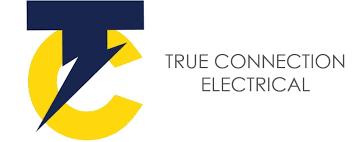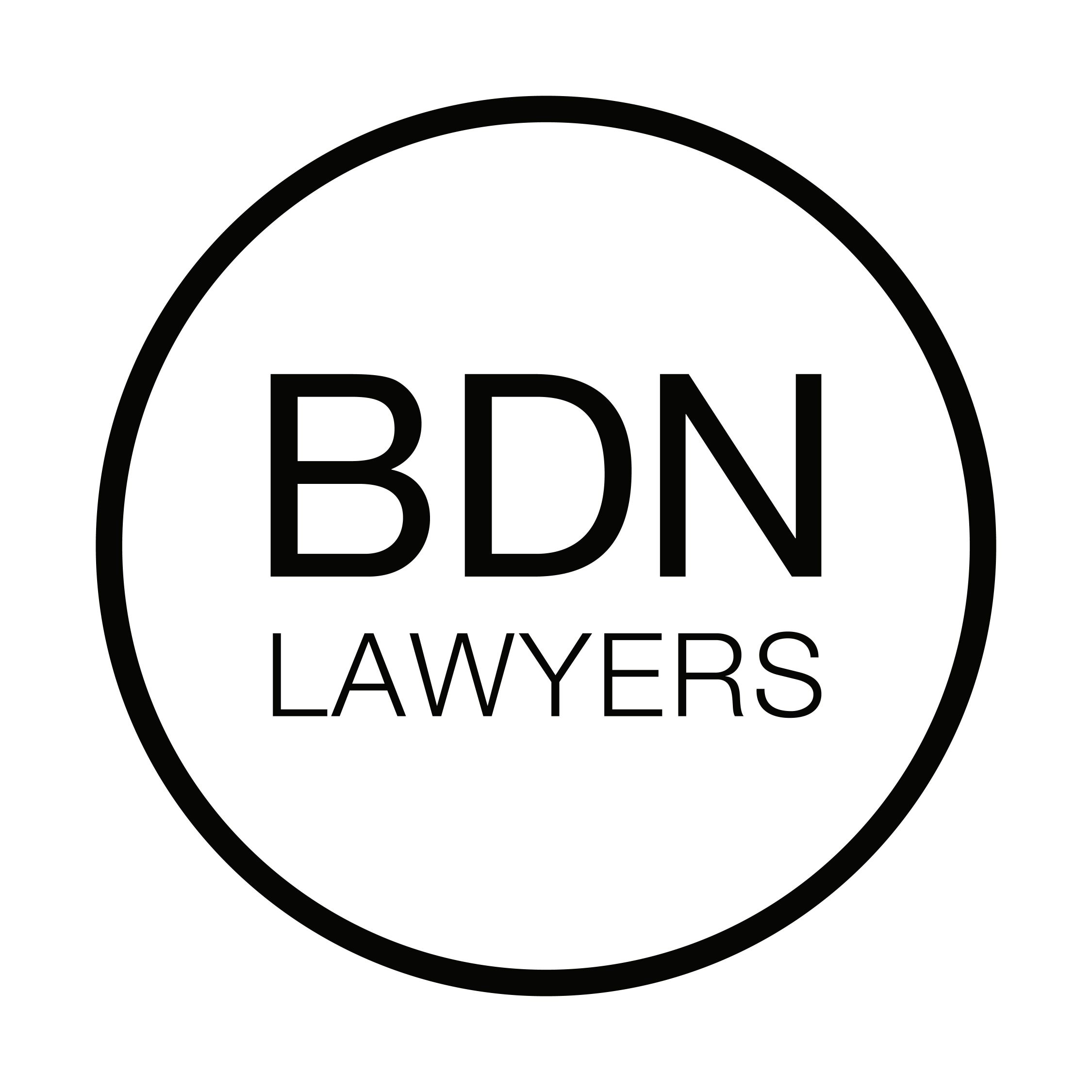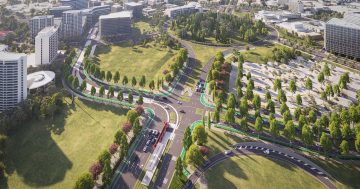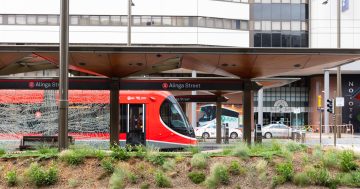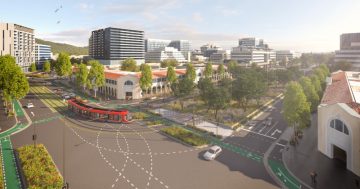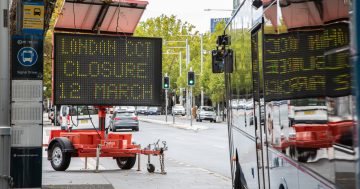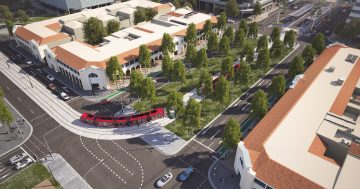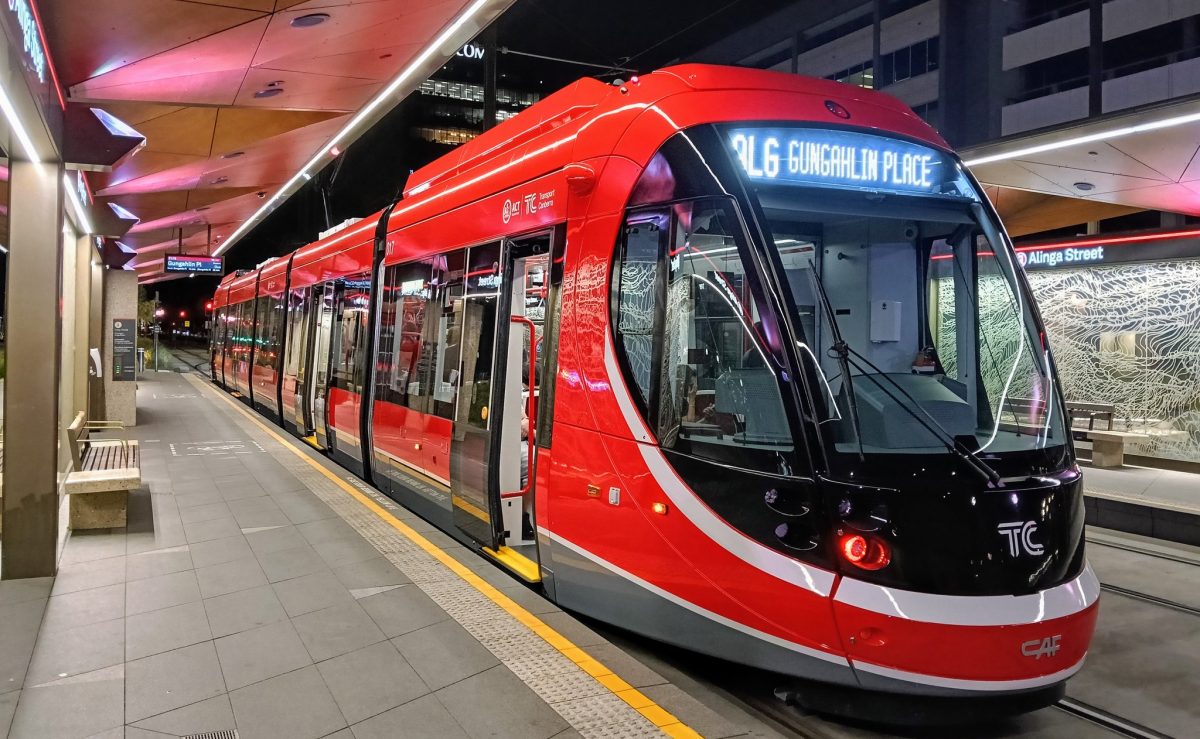
The new LRV017 was spotted recently at the Alinga Street light rail stop in the city. Photo: Amy Jelacic/X.
Four of five new battery-powered light rail vehicles are now in Canberra and two are already in work on the Gungahlin to City line.
Keen public transport observers have spotted the new light rail vehicles (LRV), which progressively arrived with little fanfare last year from Construcciones y Auxiliar de Ferrocarriles (CAF) factory in Spain.
Transport Canberra said the LRVs were in various stages of testing, commissioning and acceptance.
Two had reached preliminary acceptance and were currently in service while the other two were in the final phase of testing before entering service in the first quarter of the year.
The new LRVs are pre-fitted with an Onboard Energy Storage System, required for wire-free running on Stage 2A from Alinga Street to Commonwealth Park and a section of the proposed Stage 2B route through the Parliamentary Triangle on the way to Woden.
All of the original 14-strong fleet are being progressively retrofitted for wire-free operation ahead of Stage 2A services starting in 2028.
The five new LRVs will allow existing vehicles to be taken out of service for the work without affecting the light rail timetable.
Other features of the new models include enhanced hearing loop coverage, which helps people with hearing difficulties, within the passenger saloon; upgraded passenger display information in the interior and on the exterior of carriages; and an anti-drag safety system on the passenger doors.
The National Capital Authority required Stage 2 to be wire-free to preserve the heritage vistas.
The five additional battery-powered LRVs were ordered in 2022.
These will be charged as the LRV travels along the wired sections of track, supplemented by a regenerative braking system where the motor acts as a generator during deceleration.
The Mitchell depot has been expanded to fit the new LRVs.
Construction of the 1.7km Stage 2A is due to start next month as the enabling project to create a level intersection at London Circuit and Commonwealth Avenue enters its final stages,.









